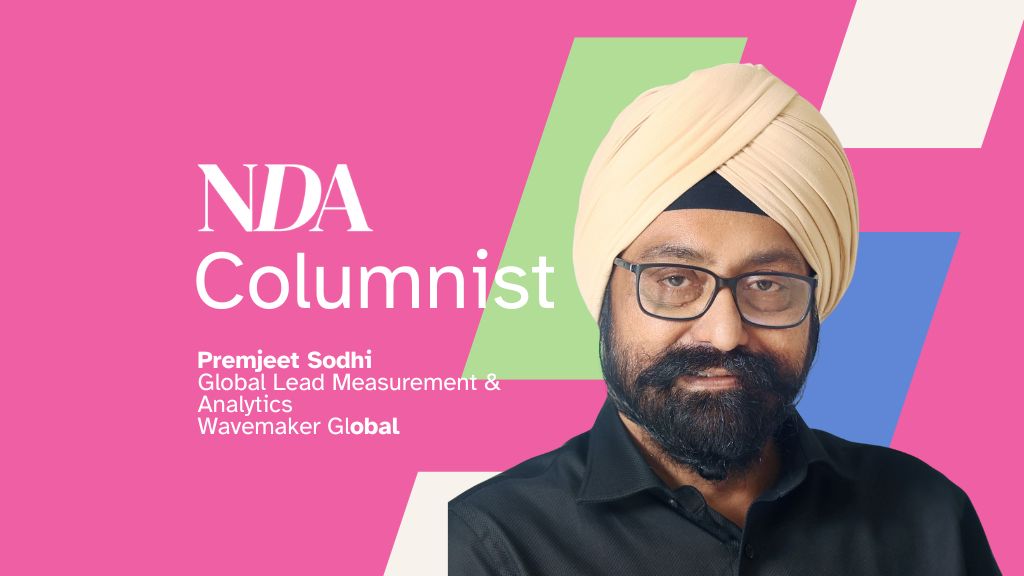By Premjeet Sodhi, Global Lead Measurement & Analytics, Wavemaker Global, NDA’s monthly columnist
In the face of tectonic shifts in the media landscape, the science of measurement has undergone a dramatic transformation. Once relegated to the backroom, measurement has now emerged as a focal point in executive discussions as the industry recognised its strategic importance.
In high-growth and low-growth markets alike, media leaders are rethinking their approach to measurement, moving from a retrospective model to a real-time, continuous strategy. This evolution of measurement is reshaping how success is defined. Driving analytics from the sidelines to the spotlight, and fuelling an era where measurement isn’t just an afterthought – it’s a powerful tool for competitive advantage and innovation.
This shift is accelerated with the increasing share of digital investments (estimated at 70% in Global Ad Spends) and inculcation of the ‘performance mindset’ into all levels of decision making. Increasing digitalisation, fragmentation & complexity of the market have all triggered a deluge of transaction and observation data.
Decoding this data not only to drive top-line growth but for optimisation of investments is critical to drive efficiency and to unlock growth. Marketers are looking for the single source of truth to identify the winning hand to get ahead. Astute measurement is an enabler and is taking centre stage in organisations to drive this competitive advantage.
The key elements of measurement science
Measurement is a very broad term, and it encompasses three key areas of capabilities. The mechanics of data acquisition for reporting; application of data science to extract insight; and most importantly the science of crafting measurement frameworks that define the ‘what’s, why’s & how’s’ of measurement, connecting the organisation’s growth plan to functions across the pyramid.
An integrated and effective approach to measurement is not an easy task. On the one hand it needs to provide inputs for strategic long-term decisions while, on the other, it must cater to the granular needs of campaign optimisation.
The alignment, inter-connection and regulation of various ongoing measurement instances and their stakeholders scattered across the organisation are an internal political hurdle. The strengthening walled gardens, lack of standardised metrics and the hardening privacy regulations all present external challenges to seamless measurement.
Must do’s for a cracking measurement approach
First, data acquisition. In this era of increasing volume, velocity and variety of data, obtaining standardised & quality data is fundamental. As each platform delivers data differently and limited by privacy regulations, it is imperative to define strict guidelines for a uniform data taxonomy. Harmonising cross-platform audiences, geographies, campaign constructs, high-value consumer actions and algorithms for derived variables such as cross-platform reach & attention are all part of ensuring quality data. Companies must invest in technology-based infrastructure for integrated data-repositories, data clean rooms and reporting dashboards.
The next ‘must do’ is to look at data science. The decline of cross-platform click-based attribution and its limitation to within platform optimisation has necessitated adoption of new approaches in data science. Incrementality testing on audiences, geos, messaging or media intensity are the litmus test for calibrating attribution.
From an omni-channel perspective and synergy between brand and performance initiatives, long dormant econometric modelling techniques such as market-mix modelling, random forest techniques, audience classification algorithms and more must be part of the analytics stack. Companies must adopt analytics platforms with advanced AI/ ML solutions that integrate all the above measurement techniques in conjunction with analytics offered by media platforms to build analytics engines for decision-making at the speed of business.
Having a measurement framework is also crucial. While data acquisition and data science are the muscle, a measurement framework is the intelligence. It is still in its infancy and constitutes identification of KPIs for the array of decisions across the organisation pyramid and translates these into business questions, data requirements, analytics approach and an action-oriented cascade plan. A sustainable measurement plan should include scripting of an annually updated learning agenda and a test-and-learn roadmap to demystify the unknowns and integrate the learning into the media planning systems.
It’s Time for the ‘Chief Measurement Officer’
As organisations have evolved, we have seen the creation of roles of Chief Technology Officers, Chief Information Officers, Chief Transformation Officers, Chief Insights Officers & Chief Data Officers – it is now time for the Chief Measurement Officers to be appointed to design a measurement manifesto that encompasses all aspects of measurement.
The incremental efficiency and effectiveness driven by acute measurement are a competitive advantage. It has never been true that ‘what can’t be measured right – can’t be managed right’ and organisations that do not focus on measurement as a critical capability will be challenged for success.
Effective measurement is no longer optional – it’s essential. In a data-rich, complex market, companies that embrace advanced measurement frameworks and analytics gain a vital edge. With precision measurement now a strategic priority, organisations that invest in robust measurement capabilities will drive efficiency, unlock growth, and position themselves ahead of the competition.












